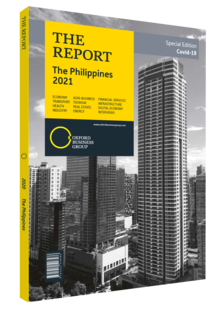The Philippines' infrastructure agenda offers new opportunities
Faced with recession and uncertainty over the length of the pandemic, President Rodrigo Duterte’s administration is hoping that landmark projects under the P8trn-9trn ($159.1bn-179bn) Build, Build, Build (BBB) infrastructure plan can kick-start economic recovery.
Supply & Demand
The initial phase of the pandemic proved disruptive to global supply chains, leading to fears that the construction industry would be unable to source the building materials or commodity inputs from overseas necessary to carry out projects.
In March 2020 imports fell by 26.2% year-on-year (y-o-y) to $6.91bn, partly reflecting the delayed arrival of raw materials needed for the government’s construction drive, according to Nicholas Antonio Mapa, an economist at ING Bank Philippines. A similar trade picture continued for most of 2020, resulting in a so-called import implosion as demand for consumer goods and capital formation contracted by double-digit percentages each month. In addition, imports that arrived in the Philippines were held up as a result of quarantines and widespread lockdowns.
In an effort to mitigate these challenges, it was not uncommon for developers to house construction workers on-site – both to protect them from potential infection and ensure the continuity of vital projects. Nonetheless, in the first quarter of 2020 the total value of construction works dropped by 20.1% y-o-y to P86.1bn ($1.7bn), reflecting the impact of movement restrictions and the struggle of some private contractors to access financing. In terms of floor area, construction projects approved between January and March 2020 totalled 7.9m sq metres, down from 9.5m sq metres one year earlier.
Adequate Inventory
This slowdown in activity led to the accumulation of surplus materials that carried through to the end of the year. Slack demand for building materials was reflected in the weakness of the construction materials wholesale price index in the National Capital Region – used as a reference in the pricing of government projects – which eased from 1.8% in July and 1% in August to 0.5% in September, bringing the average increase over the first nine months to 1.4%. That compares with growth of 3.8% during the corresponding period in 2019. Sustained growth in materials prices can be understood within the context of BBB, and the government’s commitment to increase infrastructure spending from 5.4% of GDP in 2017 to a record 7.3% by end-2022. Indices reflecting the prices of plywood; plumbing and accessories/waterworks; reinforcing and structural steel, and fuel and lubricants all fell in September 2020, whereas those for sand, gravel, concrete products, cement and painting works increased.
Local Materials
The situation prompted the Cement Manufacturers’ Association of the Philippines and the Philippine Iron and Steel Institute to announce there was ample supply of domestic construction materials to meet the government’s ambitious infrastructure goals. The statement also expressed support for the prioritisation of locally made products and construction materials for infrastructure and public work projects, as outlined in the Bayanihan to Recover as One Act (Bayanihan 2), signed in September 2020 to galvanise the rebound.
In a pandemic emergency report published in May, the Inter-Agency Task Force Technical Working Group posited that there could similarly be high demand for indigenous plants and animals for pharmaceutical use, water supply for disinfection and sanitation purposes, and wood and non-wood products for the construction of quarantine and shelter facilities. The report also called for financial support for an intensification of domestic agro-forestry activity in order to mitigate potential shortfalls.
Looking ahead, construction material prices are expected to rise in 2021 as relaxed mobility restrictions and low interest rates spur construction activity, and with it demand for construction materials.
You have reached the limit of premium articles you can view for free.
Choose from the options below to purchase print or digital editions of our Reports. You can also purchase a website subscription giving you unlimited access to all of our Reports online for 12 months.
If you have already purchased this Report or have a website subscription, please login to continue.

